Albany Oregon – Willamette Valley Highlight
I have nothing against Albany, New York other than it’s the at the centre of that cesspool known as New York state politics, but frankly it doesn’t hold a candle to its western namesake Albany Oregon. I knew absolutely nothing about Albany Oregon until a few months ago when I visited it as part of a post SATW trip to the Willamette Valley (and BTW it’s pronounced Wil-am-it, dammit!). While the visit was relatively short, it did encompass a very interesting waterfowl park reclaimed from an industrial wasteland, an amazing restored carousel, tasting of superb wines at tiny Springhill Cellars winery and finally a one of a kind meal prepared by Chef Mark Bennett at his signature Albany restaurant, Sybaris. These are not the only things to see and do in Albany Oregon, but it was more than enough for me to be happy to extoll its virtues as a must place to visit in a state that is chock full of them.
History of Albany Oregon
Until you’ve actually been to the Willamette Valley it is nigh impossible to appreciate the fertility and fecundity of this near Edenic strip of land that runs for 150 miles (240 kms) on both sides of the Willamette River. Surrounded by the Cascade Mountains on the east and the Coastal Range on the west, this valley has perfect growing conditions for an astounding variety of crops, most famously grapes, but also nuts, fruits, grasses, flowers – you name it. It is the number one American producer of grass seed, Christmas trees, hazelnuts and that most useful of crops for beer lovers – hops.
Once Lewis and Clark returned from their epic journey to the mouth of the Columbia River and wowed easterners with their tales of the resource richness of the Oregon Territory it opened the door for a steady influx of fur traders and adventurers. Accessible only by horseback for the next thirty years, that all ended with the opening of the Oregon Trail in 1841. In the next two decades over 400,000 settlers made their way to the west via the trail with 80,000 of them settling in what is now the state of Oregon, most of these as farmers in the Willamette Valley. What became the city of Albany Oregon seems to have started slowly with the erection of a few houses at the confluence of the Willamette and Calapooia Rivers in the mid-1840s after smallpox and malaria decimated over 90% of the native Kalapuya tribes that had been living in the area for thousands of years. Like so many places in North America, and all around the world for that matter, the good fortune of the people who live in Albany Oregon today is based on the tragic displacement of those who were here first. Among the first settlers were people from New York state who apparently thought Albany Oregon’s location remarkably similar to the capital city on the banks of the Hudson River and thus the name.
The economy of the area has always been largely dependent on agriculture, timber and surprisingly to me – rare metals. Albany Oregon is the zirconium capital of the world – take that, Albany, New York. Unlike many small cities and towns founded on exploitation of nearby resources, Albany Oregon is thriving with a present day population of just over 50,000, up 25% between the 2000 and 2010 census.
Okay enough about the past, let’s visit the Albany of today, starting with a park that has a direct correlation with the rare metals industry.
Talking Water Gardens, Albany Oregon
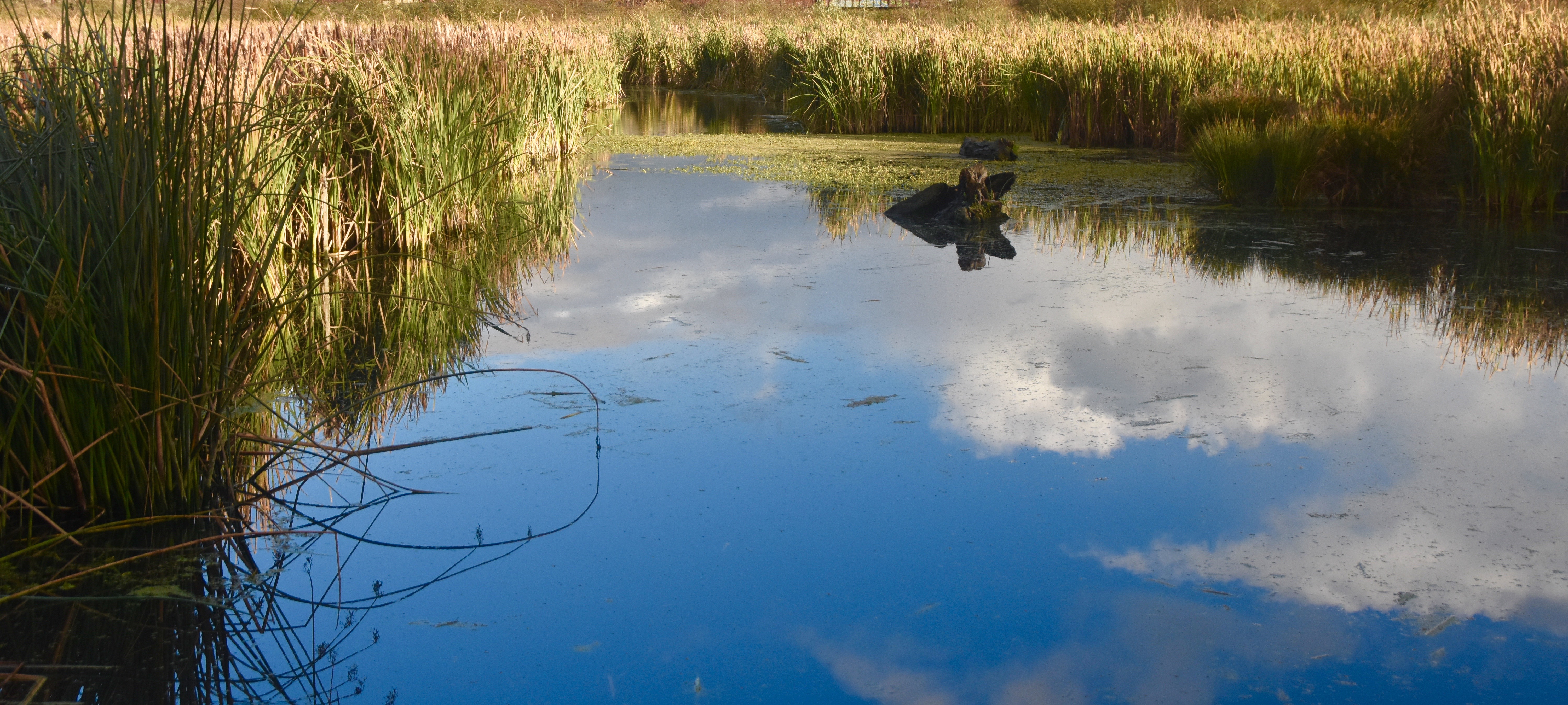
Having grown up in a mining family, I know that the by products of mining can be pretty environmentally deadly. Released untreated into the atmosphere or into rivers and streams, mining effluent or tailings can destroy a place for thousands of years. However, I am not one of those who believes that because an industry necessarily creates undesirable waste products during its extraction process, that it should be prohibited in the first place. There is an old saying – “If it can’t be grown, it has to be mined.” Just look around yourself while reading this post and realize that without metals and increasingly, rare metals, there would be no smart phones, computers, TVs, cameras or any other products that are deemed indispensable by many modern consumers. So the answer is not to stop mining rare metals, but to use science to create processes that ensure that the environmentally destructive aspects of the industry are eliminated or minimized.
That brings me to Talking Water Gardens which is doing just that. If you follow the link you will find a diagram outlining just how the waste water from the city and rare metals producer ATI is first treated at man made plants and then re-oxygenated and cooled through a natural process while passing through Talking Water Gardens on the way to the Willamette River. Too good to be true? A walk around the numerous pathways that intersect the waters should give us the answer.
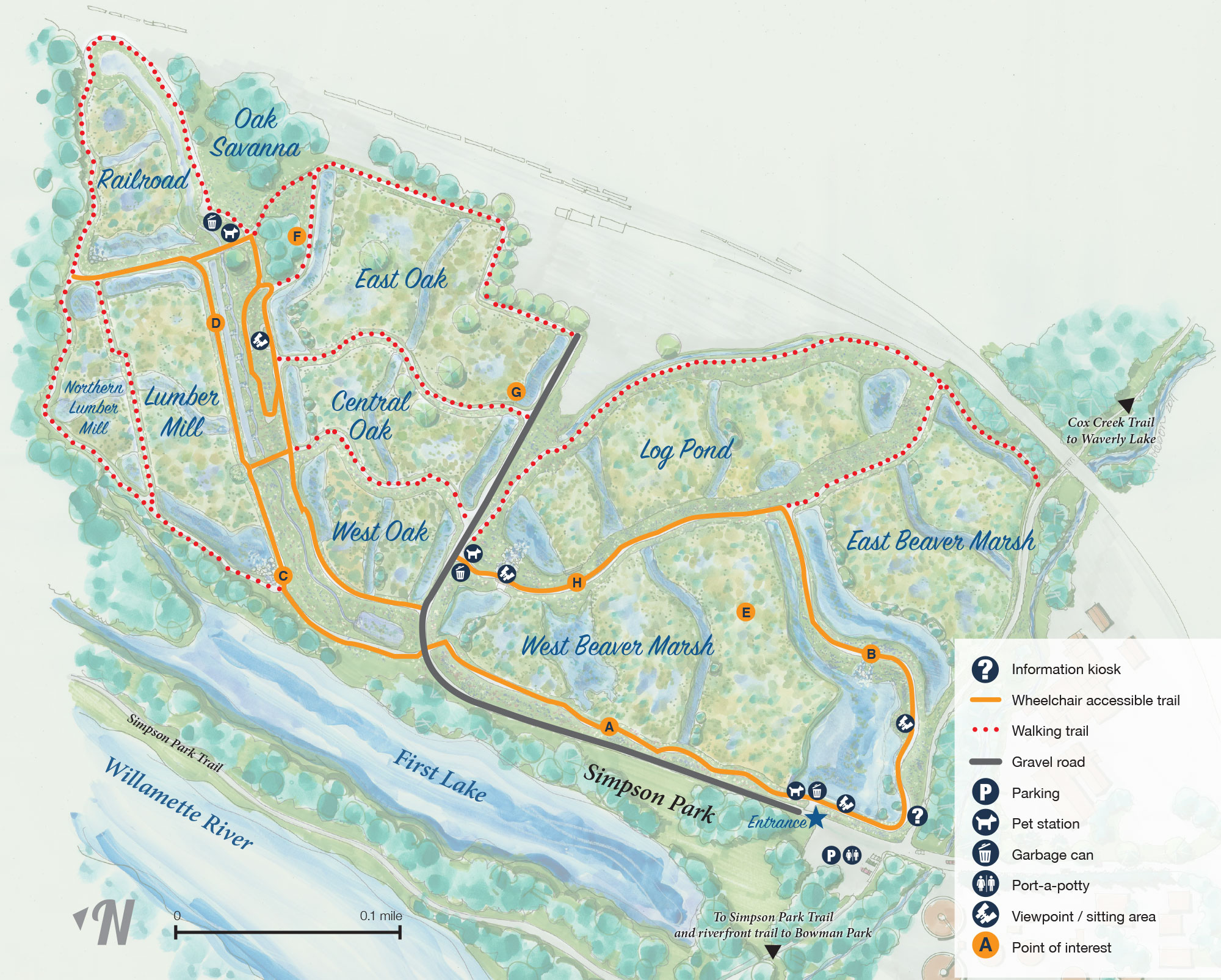
From this map you can see that there are a variety of trails and eight points of interest which include a small waterfall which is an important component of the re-oxygenation process. The place is alive with migrating wildfowl include large flocks of American widgeons with a few rarer European widgeons as well.
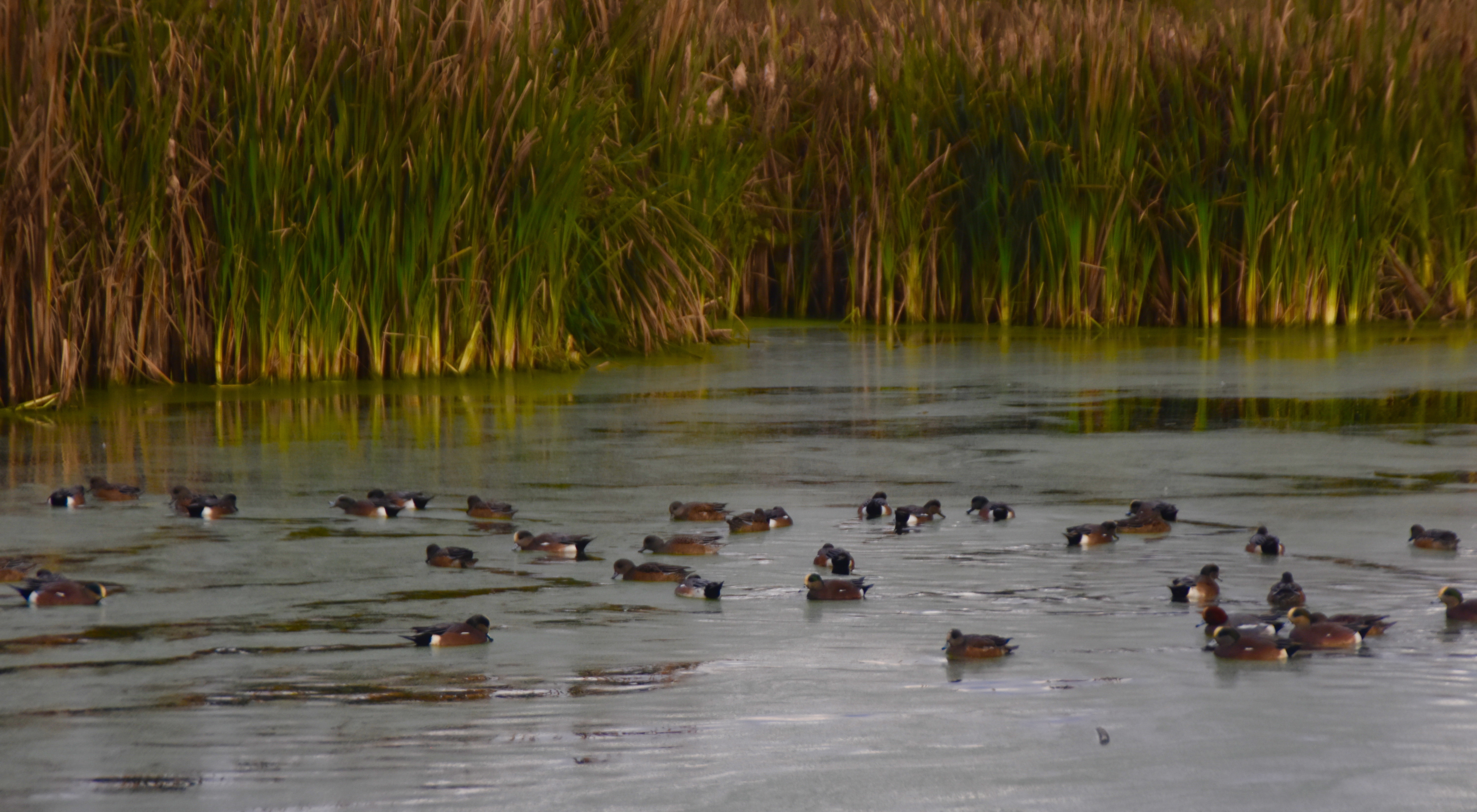
I also spotted numerous other species including Great Blue Heron and swimming muskrat and mink.
Is Talking Water Gardens going to knock your socks off? No, but remember this was once an industrial wasteland spewing untreated effluent into the Willamette River. Today it’s a marriage of science, industry and nature producing something that’s a thousand times better than what was here not that long ago. It’s an environmental good news story and we can never have enough of those.
The Albany Carousel
While the Taking Water Gardens have an important environmental purpose that also doubles as a great place to watch wildlife in peace and tranquility, the brand new Albany Carousel was created for one reason only – to create joy in the hearts and minds of the children and adults who come to ride any of the 52 magical animals that go round and round, each with a story of its own.
Not many communities would buy into the idea of building a modern indoor carousel from scratch. I can just hear the outcry from ‘activists’ if someone floated the idea in the city near where I live – “What about the homeless? We need nursing beds, not frivolity!” yada, yada, yada. Well sometimes a community needs a pick me up just a little more and that’s exactly what the Albany Carousel has been and will be for years to come for Albany Oregon. Opened in 2018, the carousel is the centrepiece in the revitalization of the historic downtown area. It is housed in a lovely octagonal brick building purpose built for the carousel. I pinched this picture of it from their website.
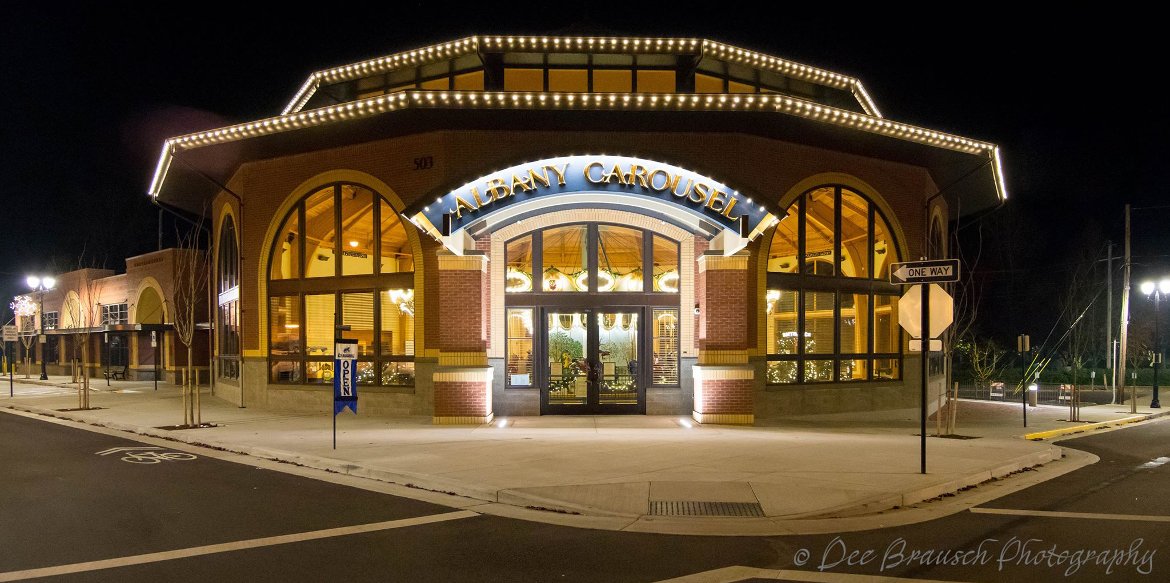
The amazing thing about this carousel is that all of the figures were carved and painted by local volunteers and then attached to a 1909 Dentzel Carousel Corporation operating mechanism that was donated to the project through the auspices of a great grandson of Gustav Dentzel, the German emigré who founded the company. Dentzel carousels are considered the finest ever made with many still working today, the most famous probably being King Arthur’s Carousel at Disneyland which I first rode almost fifty years ago. The union of old and new is a truly astoundingly good carousel.
Unfortunately, the day we visited, the building was technically closed for an event honouring the hundreds of volunteers who participated in the project, but I was able to wheedle my way in to get a few pics.
The great carving starts right at the door with this hare and smart aleck frog.
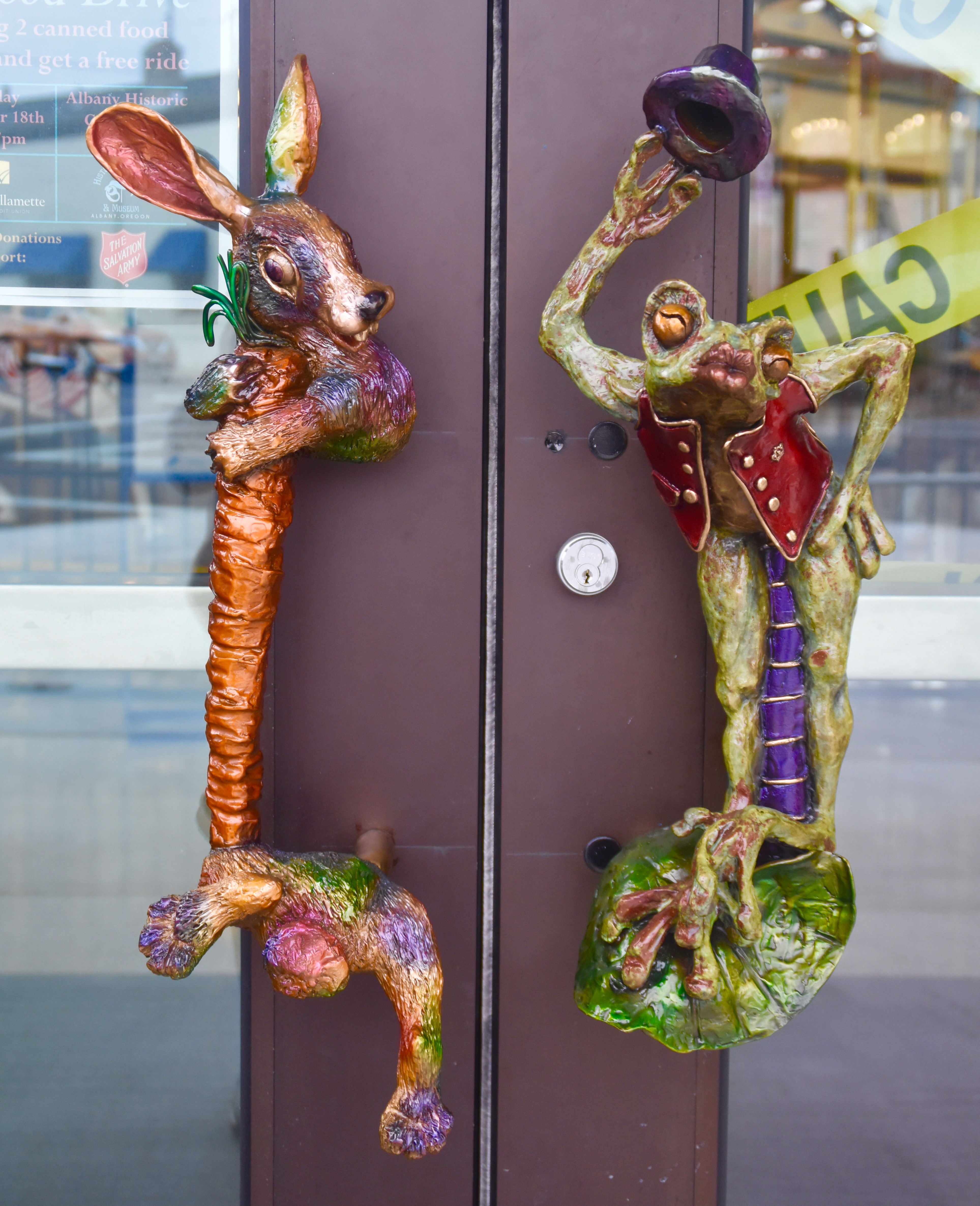
This gorgeous creature is a mythical hippocampus called The Guardian. He took almost a year to carve and paint, but the results were well worth the effort.
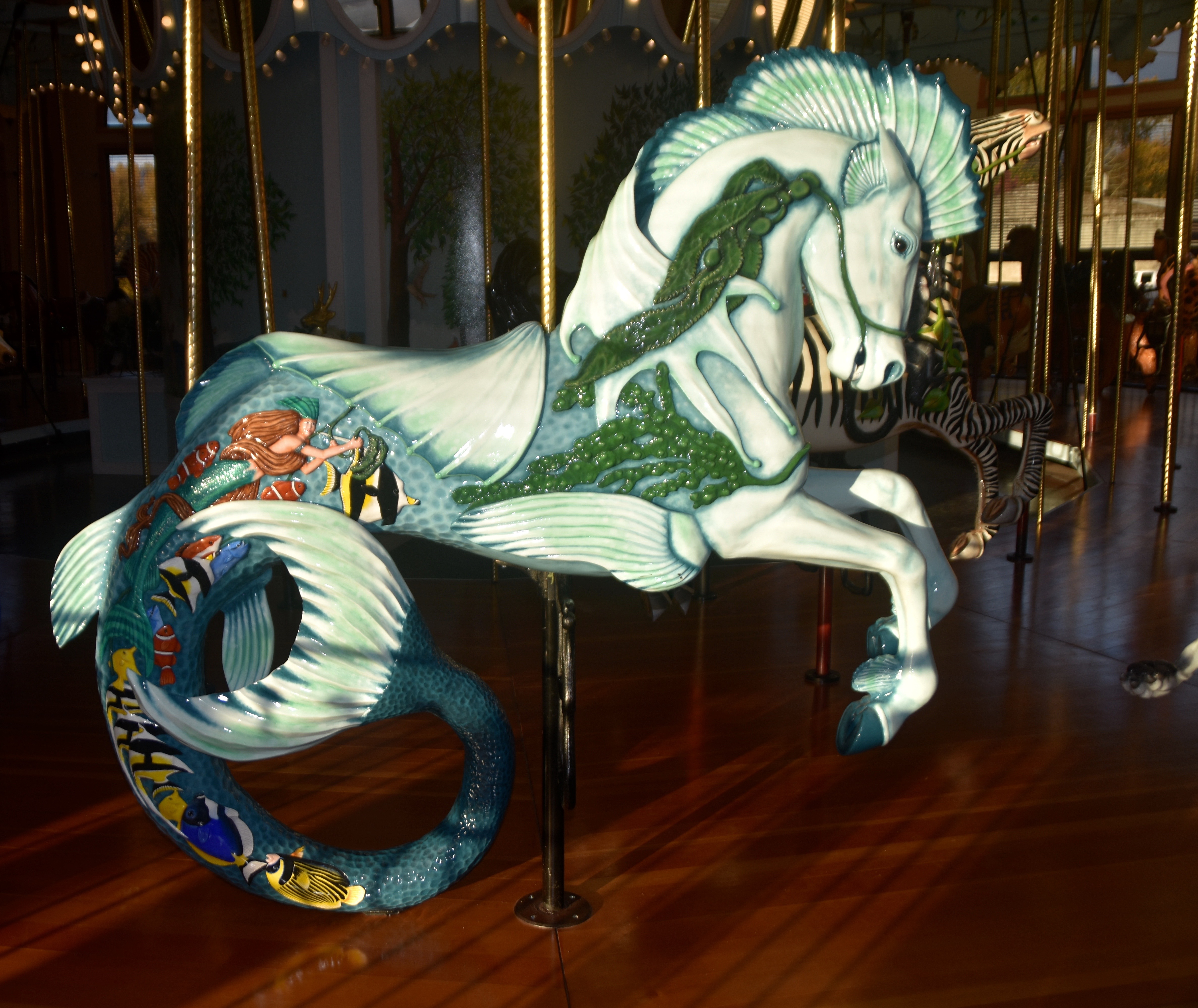
This is Hope, a baby Masai giraffe actually life sized at 7’6″. The saddle is made from two yellow-billed hornbills and as with many real giraffes in the Masai, there’s an oxpecker hitching a ride on her neck.
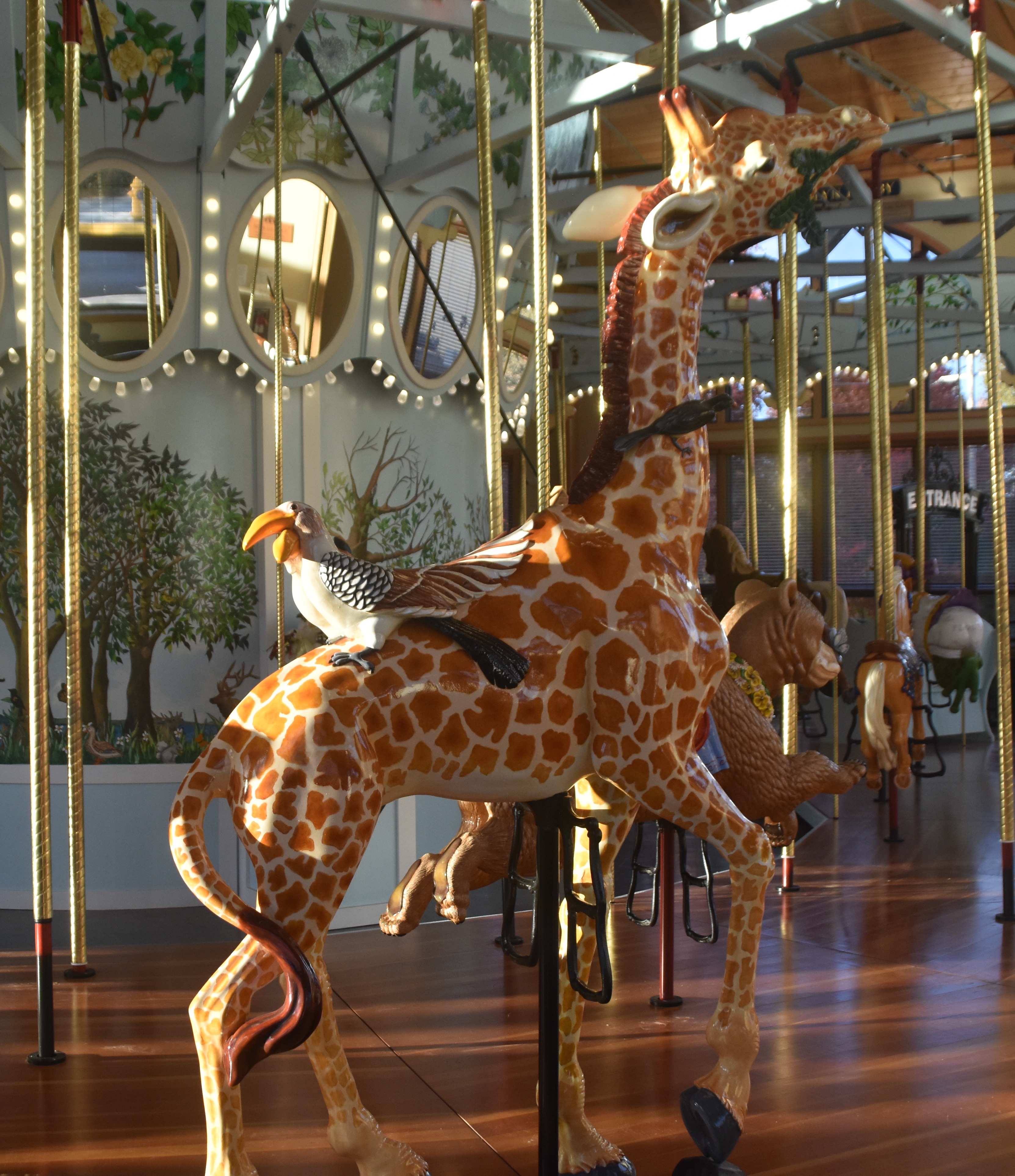
Neal is a life size carving of a real rescued greyhound racer by that name. Note the cliff swallows flying alongside him.
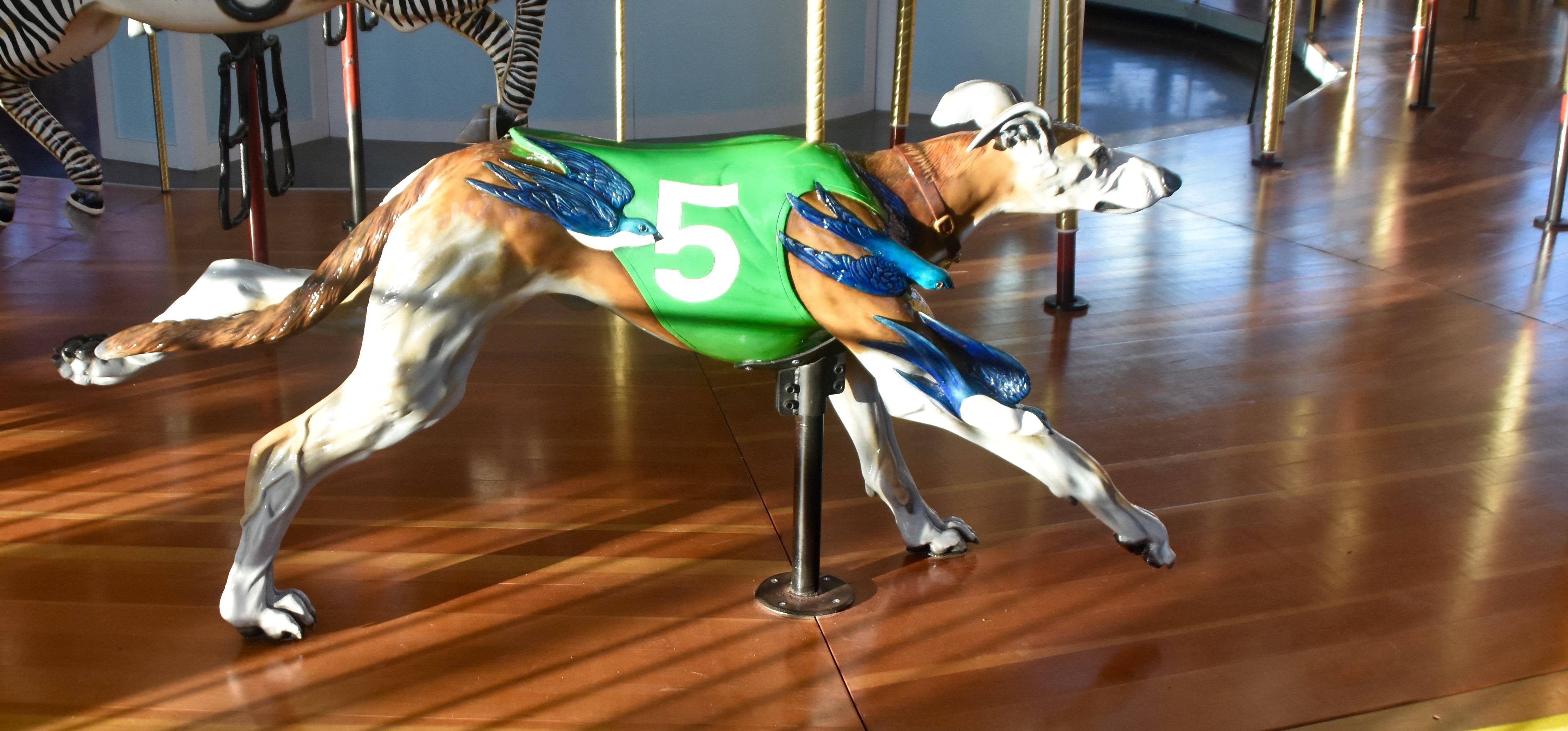
Tez, the Indian Black Buck Antelope
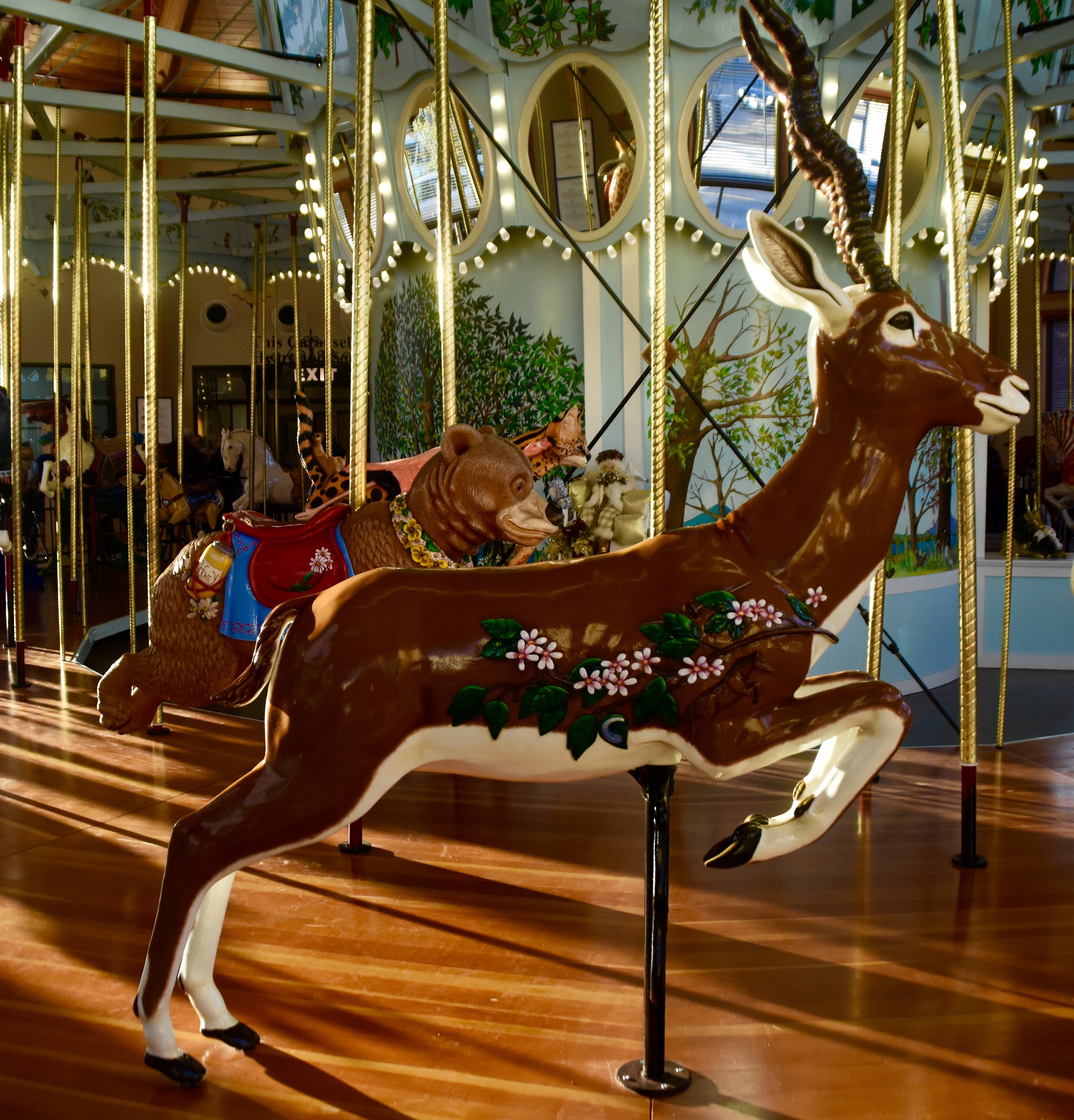
And finally, Peace the lioness. Her blanket has the word peace in 27 languages
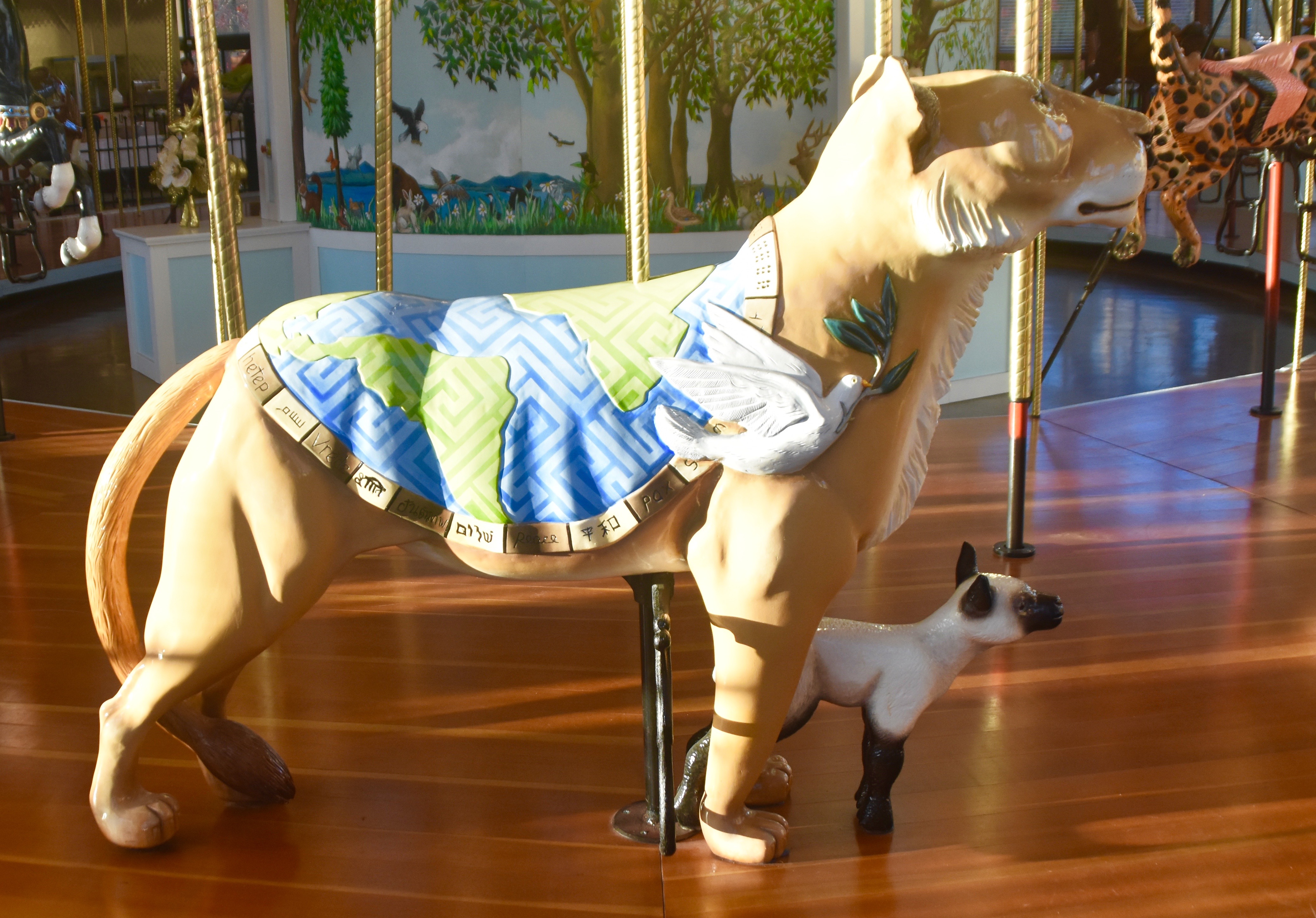
Entry to the Albany Carousel is free and for a $2 token you can ride any one you want or bring $104 and ride them all. I would love to come back and create a photo gallery of each and every animal as every one is a work of art and dedication to community.
Springhill Cellars Winery
After our far too short visit to the carousel, we crossed the Willamette River and drove a short distance up into the hills that flank the valley and where most of the pinot noir and pinot gris grapes that have made Oregon’s wine justly famous, are grown. I first fell in love with Oregon pinot gris on a visit to the state about ten years ago. It is produced in such small numbers and is so sought after that, finding it on the east coast of Canada where I live, is next to impossible. Thus I was more than delighted that we were going to a tasting at one of the state’s smallest producers, Springhill Cellars followed, I hoped, for a chance to buy some of their prestigious wines.
Springhill Cellars produces only 1000-1200 cases of wine a year – that’s a pittance compared to #1 producer King Estate which exceeds 400,000 cases a year. As you can see, it’s a tiny operation with this red barn basically being it. The back door on the left leads to the tasting room which also doubles as the barreling room.
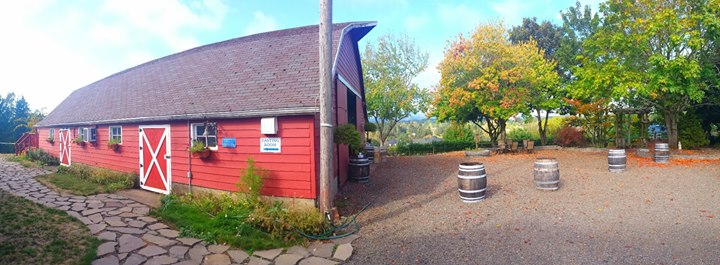
Inside, third generation wine maker Connor McLain took us through a tasting of the pinot gris and pinot noirs that were being made at Springhill Cellar.
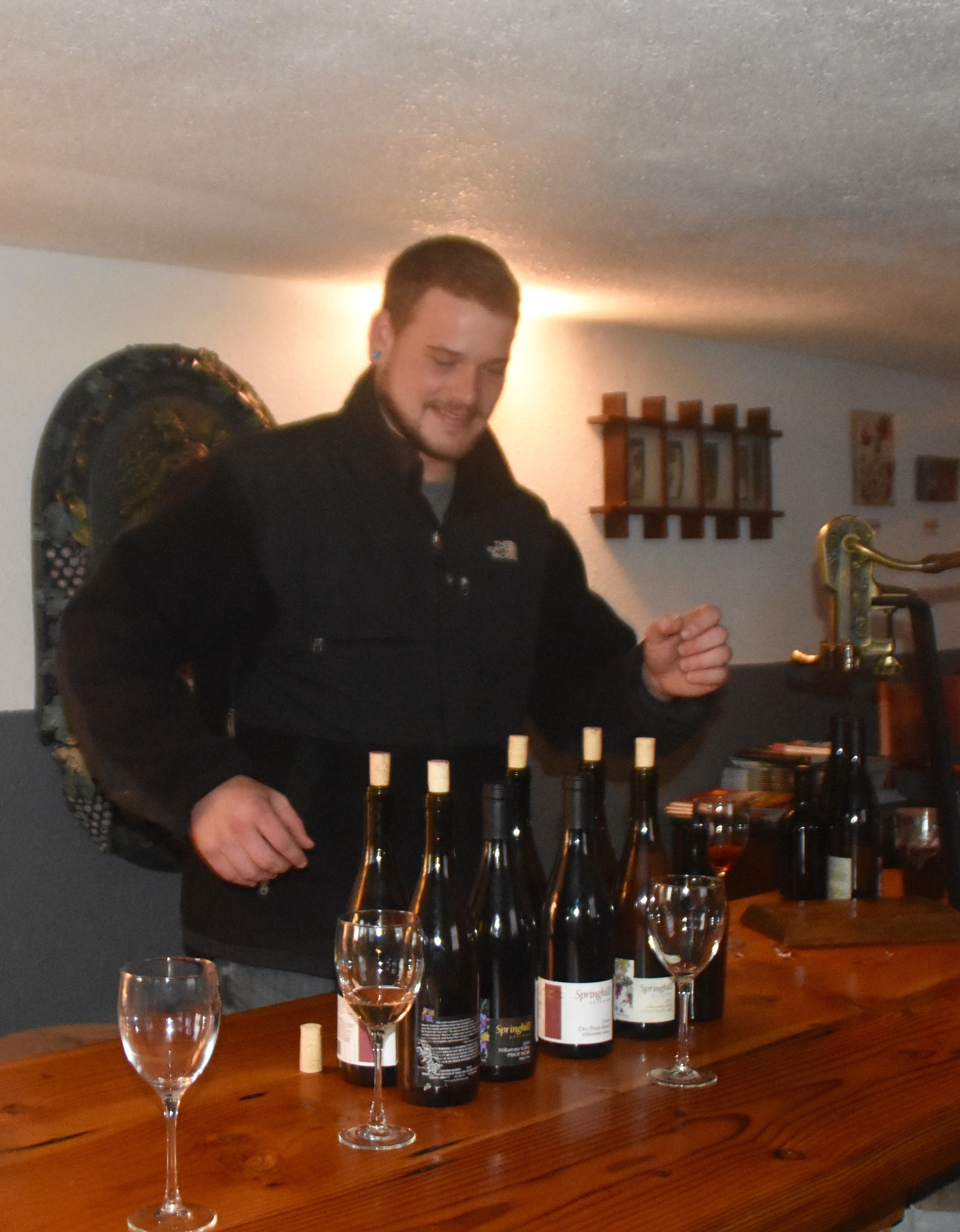
And this ladies and gentlemen is the total production of Springhill Cellars. Incredibly this amount of wine is able to sustain not only a viable winery, but a lovely family property that adjoins it.
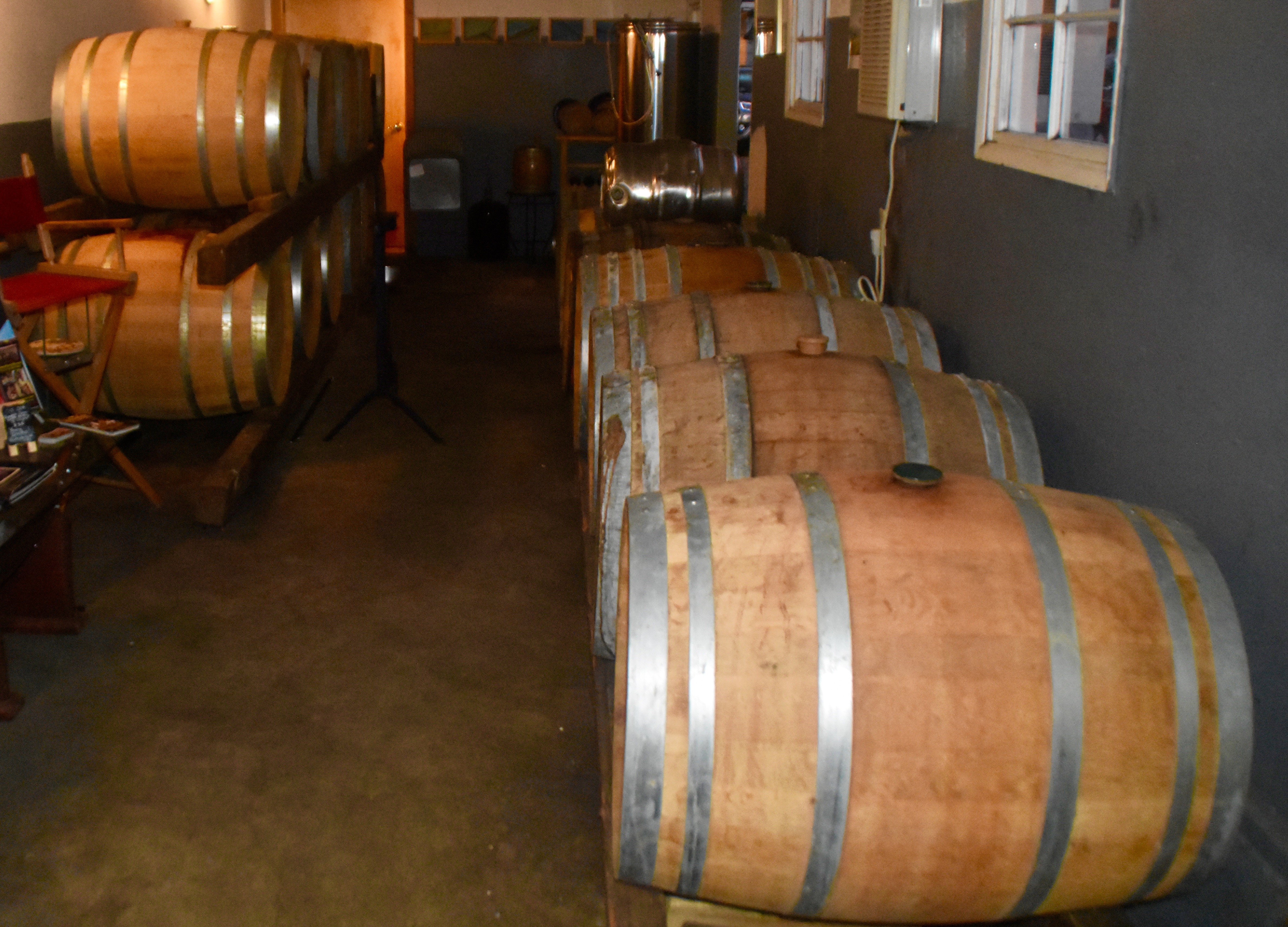
Here are a pinot gris and pinot rosé that you can only buy at the winery. While they are not giving them away by any means, having no shipping costs or multiple middlemen means you get terrific value for the wines you buy direct and I can attest that these two were splendid examples.
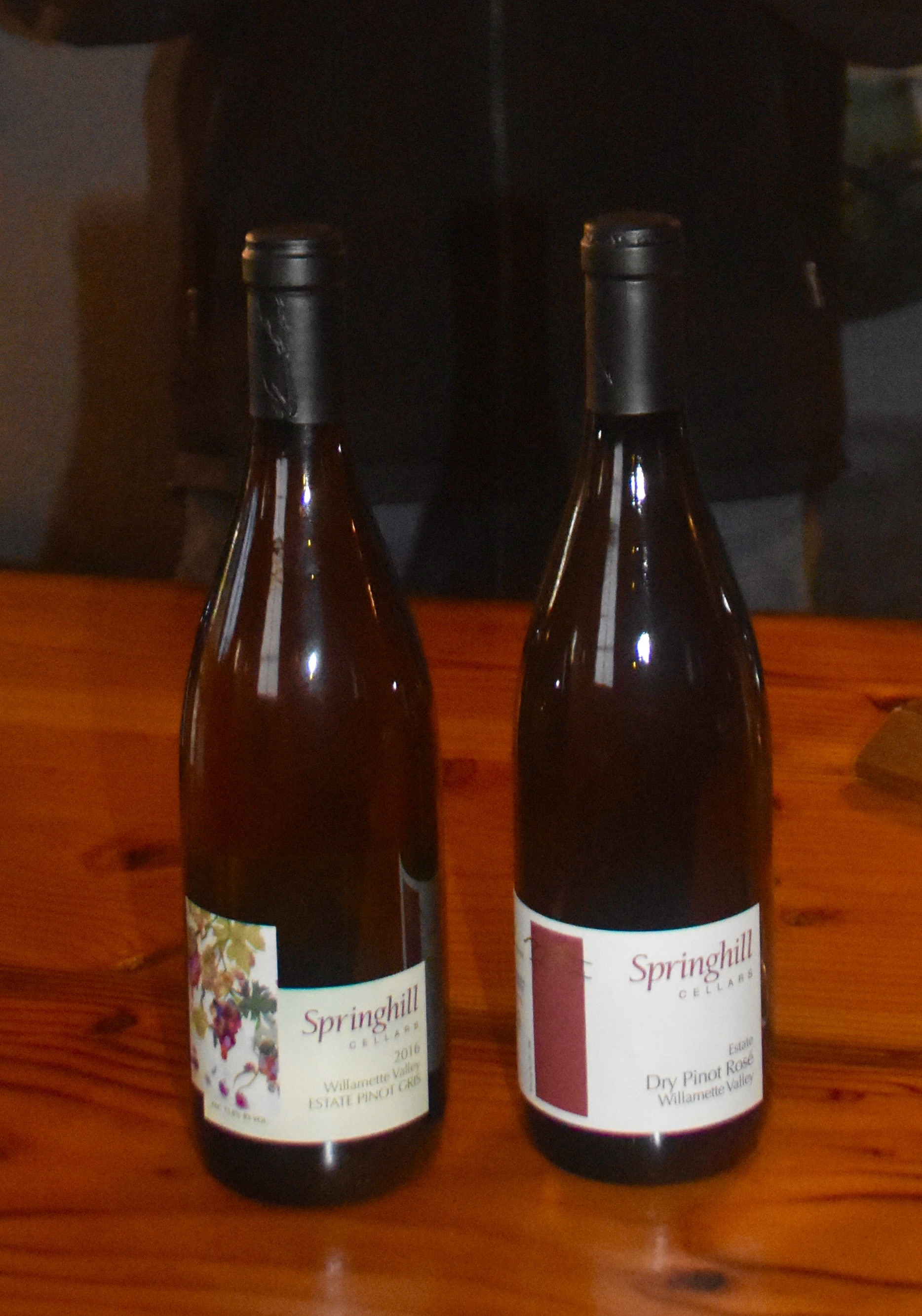

With wine purchases in hand and after saying goodbye to Mr. Jack-o-Lantern we headed back into Albany for our final visit of the day. Along the way we passed this place which might have warranted a visit if Alison was with me, but she wasn’t and it just elicited a chuckle.
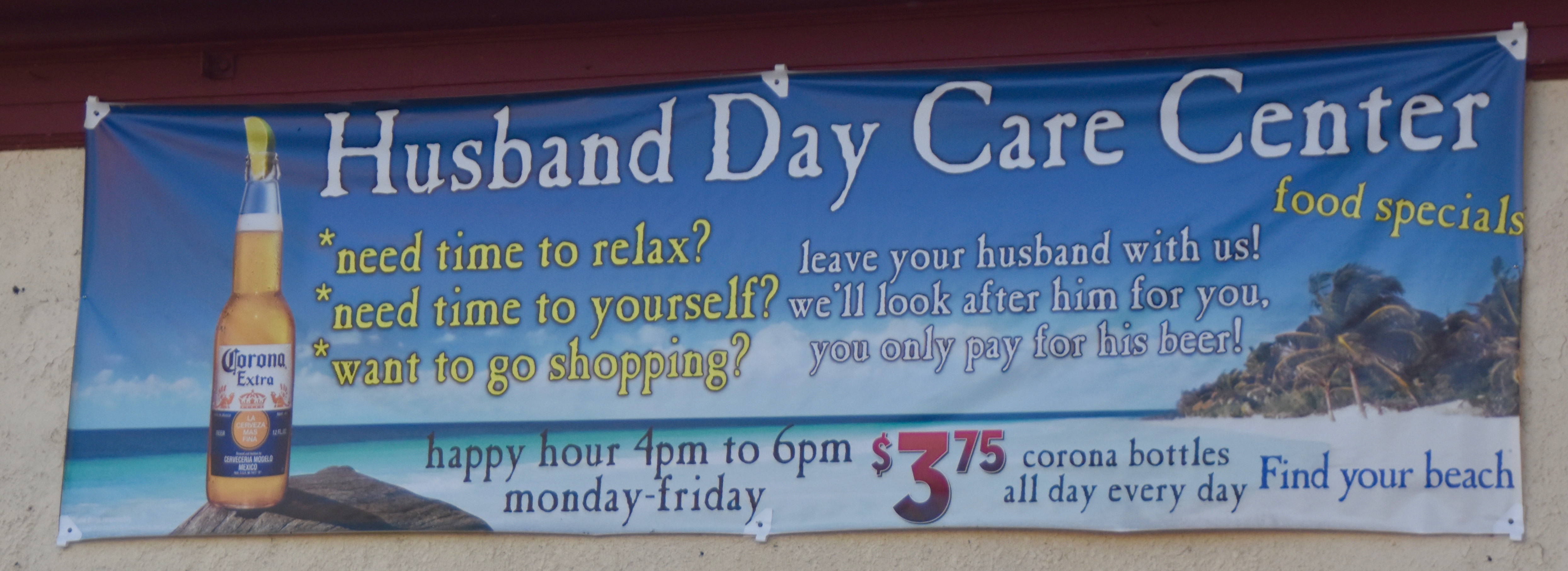
Sybaris Bistro
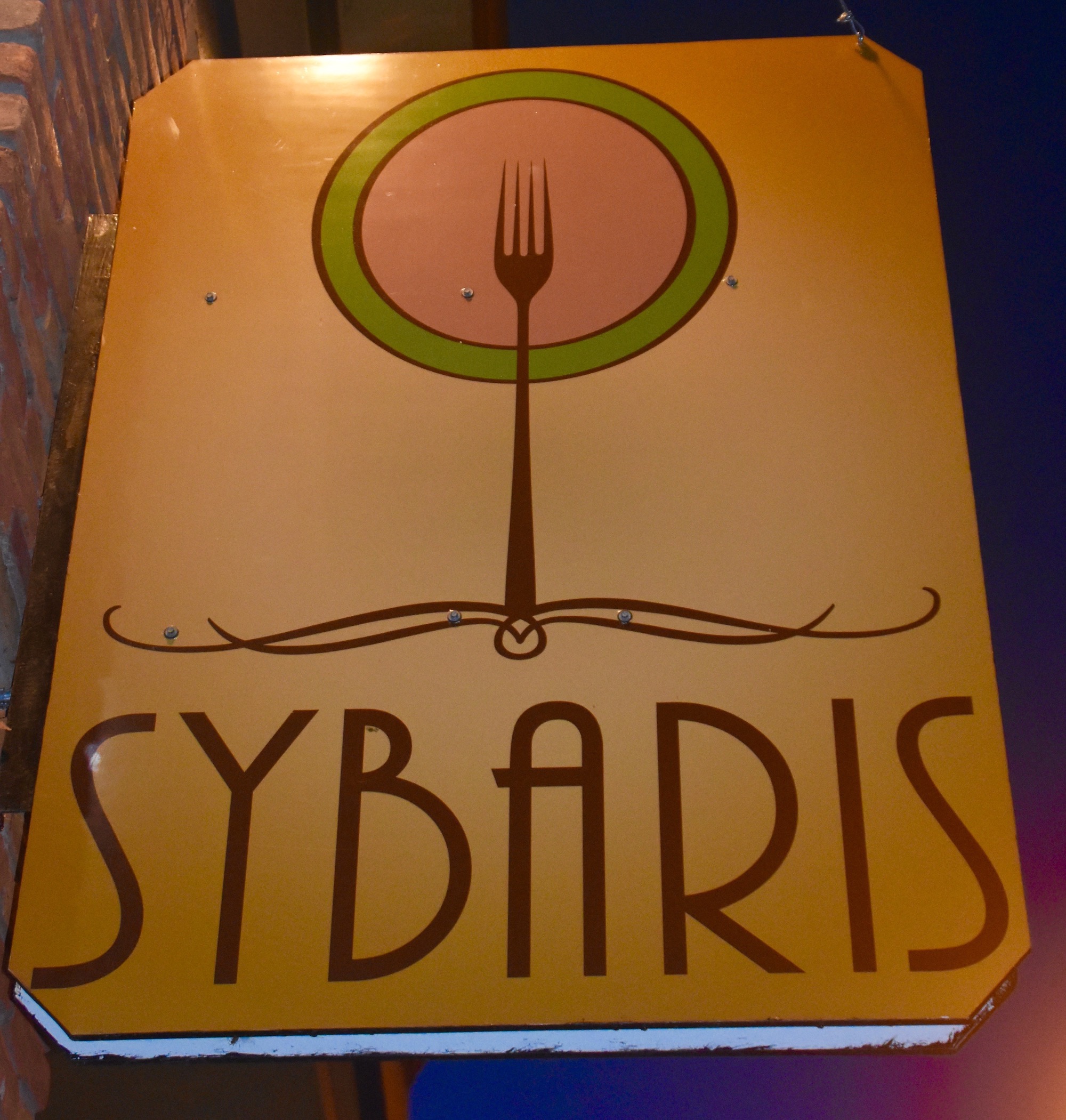
Kitty corner to the Albany Carousel is one of the top 10 restaurants in Oregon, Chef Mark Bennett’s Sybaris Bistro. If you follow the link to the top 10 restaurants, it immediately becomes apparent that very few of them are in Portland, with most in communities much smaller than even Albany. The common denominator for most is the creative use of the cornucopia of fresh ingredients readily available in Oregon. Combine the seafood harvest of the Oregon coast with Willamette Valley produce and what is available from eastern Oregon’s vast ranch lands and you’ve got something for every possible palate. And of course, don’t forget the wine and craft beer to pair it with.
This was a Monday and ordinarily Sybaris would be closed, but Chef Bennett and his crew were on hand to prepare a special three course meal just for our tiny group of four – there are some real benefits to signing up for these SATW post-conference trips. As I suspected, the name Sybaris is derived from the ancient Greek colony of the same name on the southern coast of Italy where the residents, Sybarites, were renowned for their love of luxury, particularly when it came to food and wine.
The interior of the restaurant is your basic brick, reflecting the fact that this was once a commercial establishment of another nature. Brick can be cold and uncompromising or it can be, as is the case at Sybaris, toasty and inviting, especially if warmed by a great fireplace with massive stacks of firewood on either side.
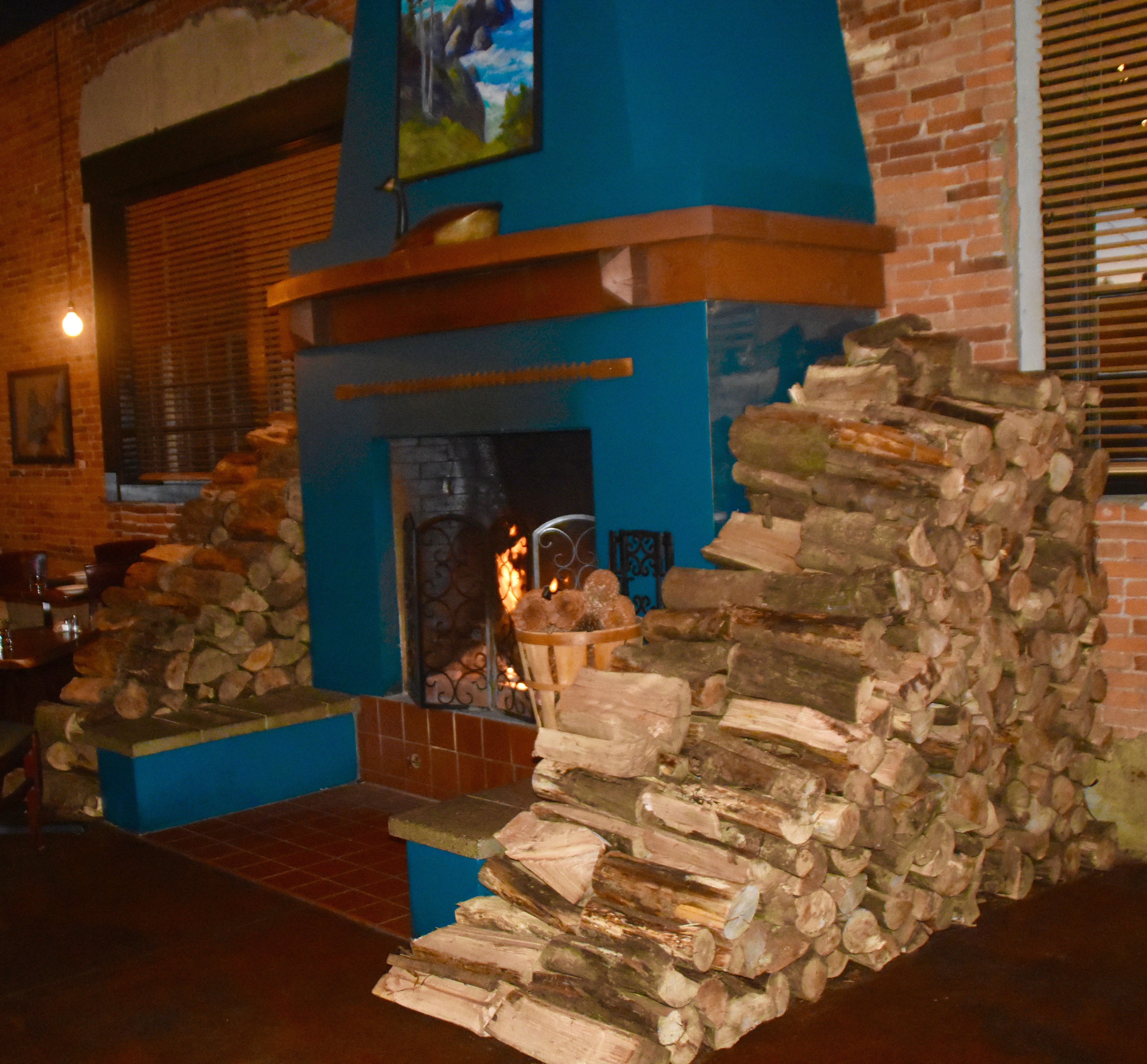
Roaming around the restaurant before taking a seat I couldn’t help but be impressed by paintings of two of my favourite people. The first is this really outstanding full length portrait of Winston Churchill. It’s a copy of a 1946 Douglas Chandor painting depicting the great man as he was dressed for most of the 1945 Yalta conference in Crimea. The original is in the Smithsonian National Portrait Gallery.
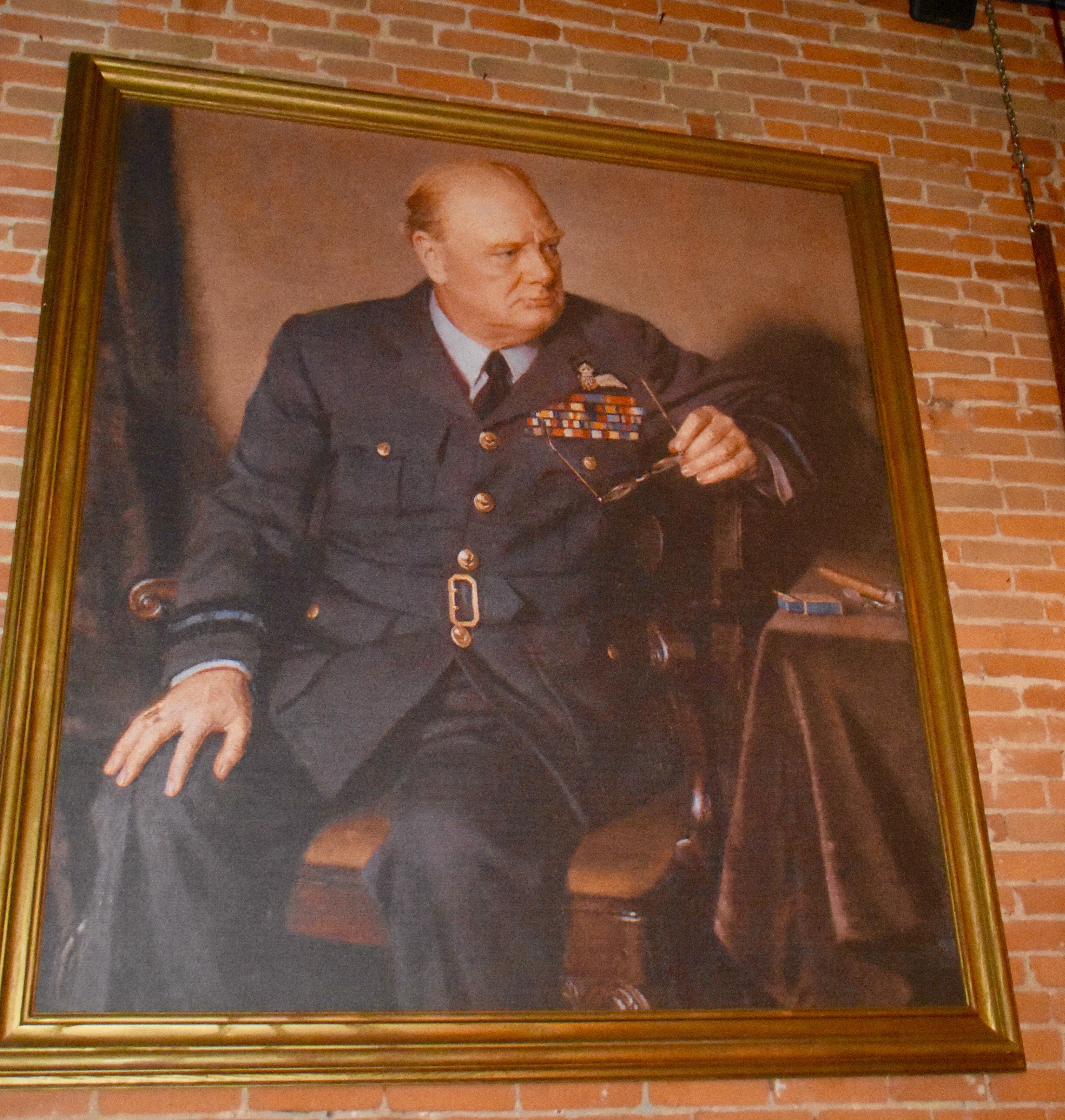
The second is of someone who I doubt Churchill would have approved of, but, despite all efforts to do himself in from sex, and drugs and rock and roll, is still with us – Keith Richards.
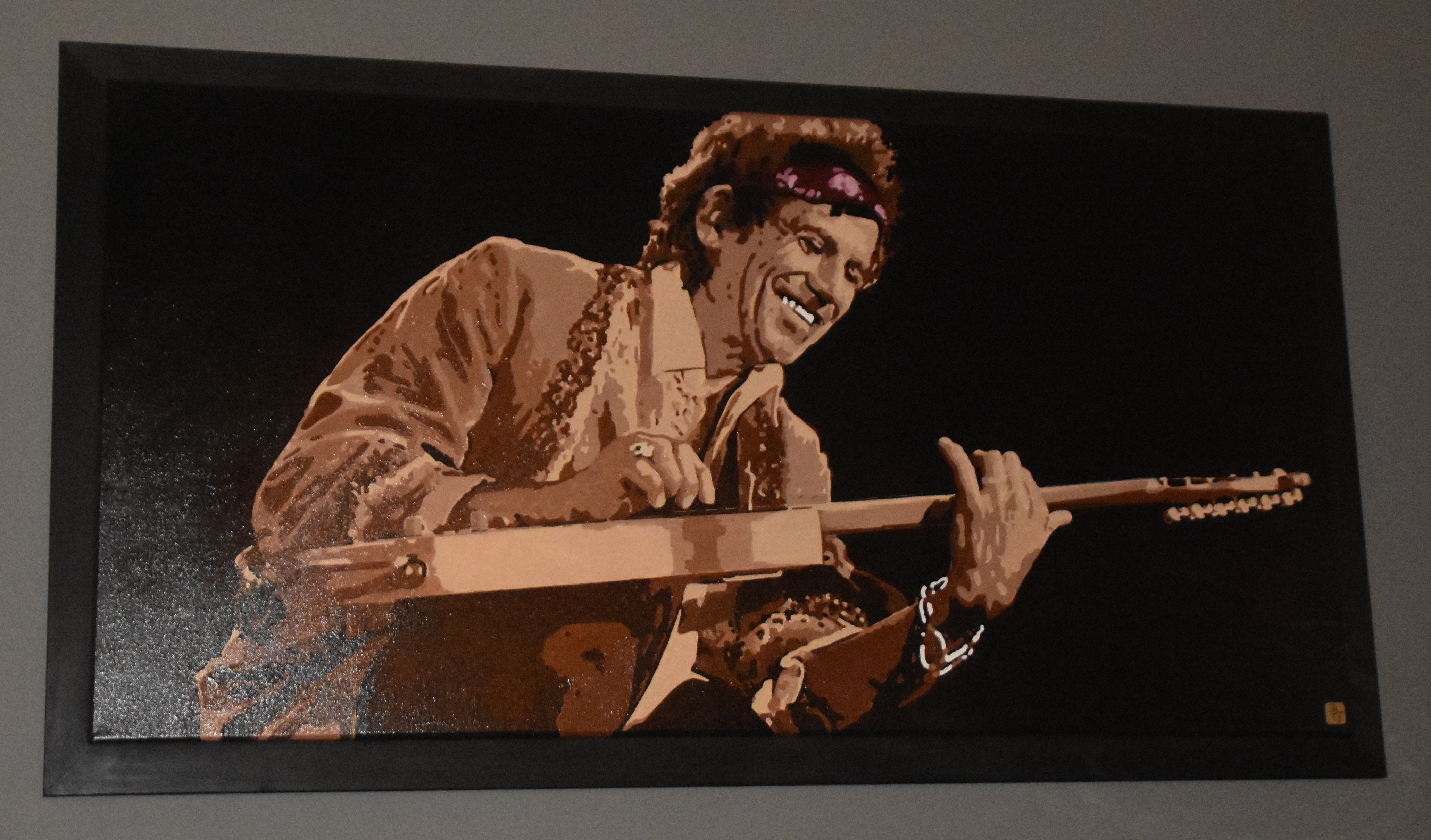
Our guide Sherri then introduced us to Chef Mark Bennett, who was affable, approachable and more than willing to discuss his philosophy of cooking, which was essentially – buy it local, buy it fresh and don’t be afraid to experiment. It turns out he was a friend of Elena Arzak, now the owner and head chef of the legendary Restaurant Arzak started by her father in San Sebatian, Spain. The reason I mention this is that by sheer coincidence Alison and I had eaten there a few years earlier and had one of the most memorable meals of a lifetime. I suspect that after telling Mark this he may have thought I knew more about fine cuisine than I actually do. The bottom line is that we hit it off.
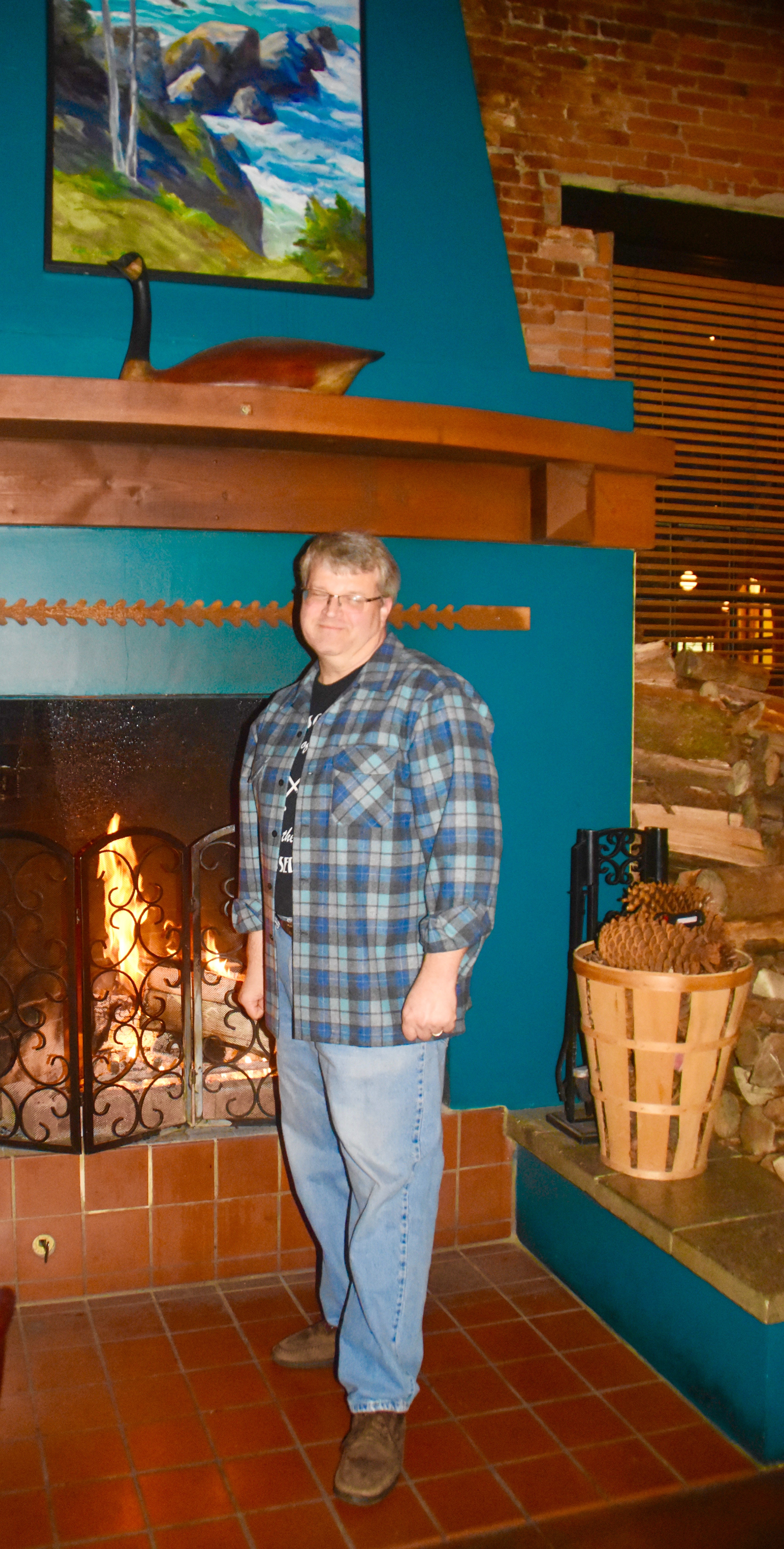
After chatting about other great Oregon and Northern California restaurants and their signature dishes our first course was delivered in this Japanese style covered dish.
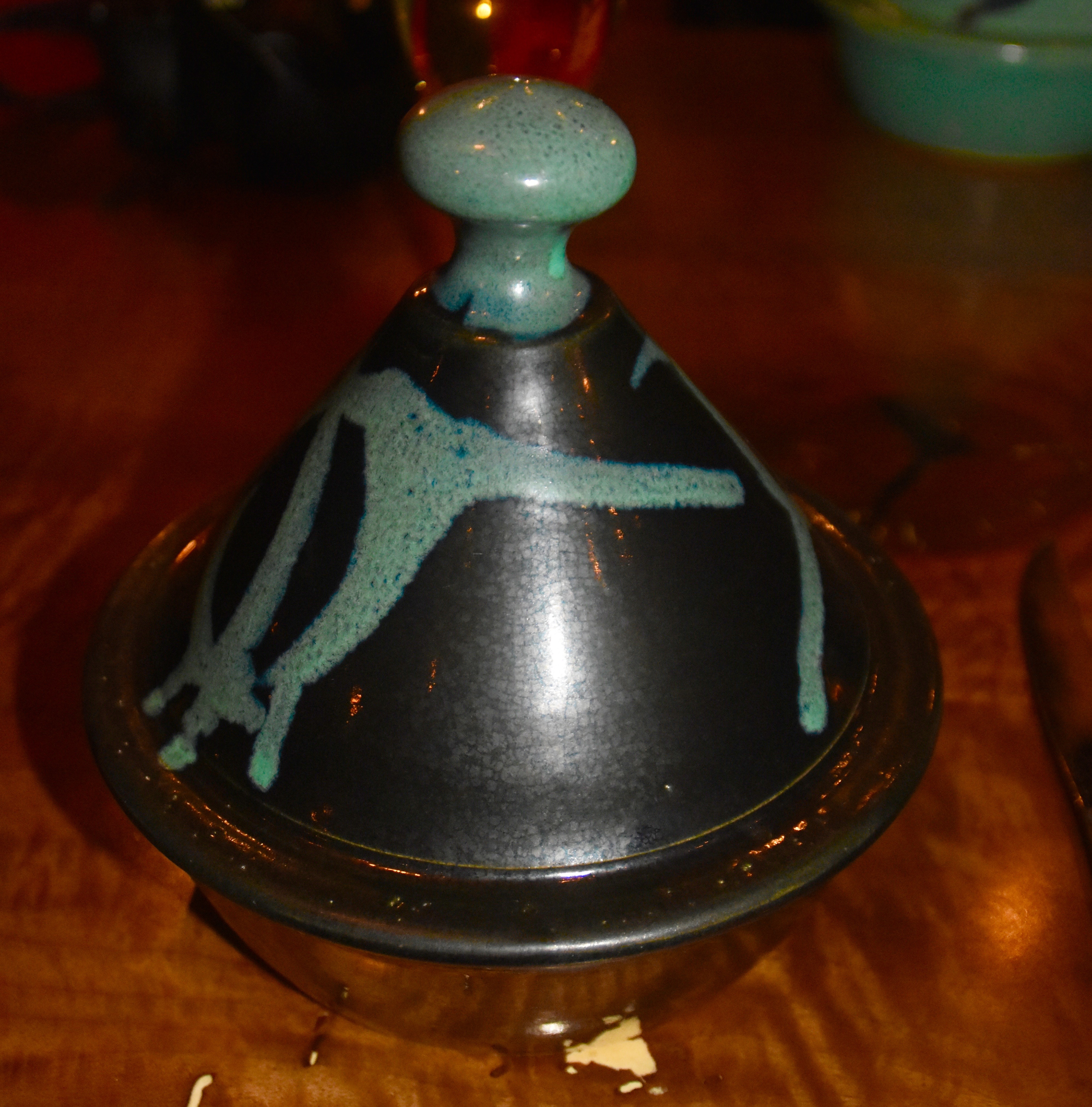
Once the lid was removed, Mark asked us if we could guess at the inspiration for this wonderful looking (and tasting) dish that features his in house created Oregon sausage. We couldn’t. It’s a tribute to the Albany carousel, just across the way.
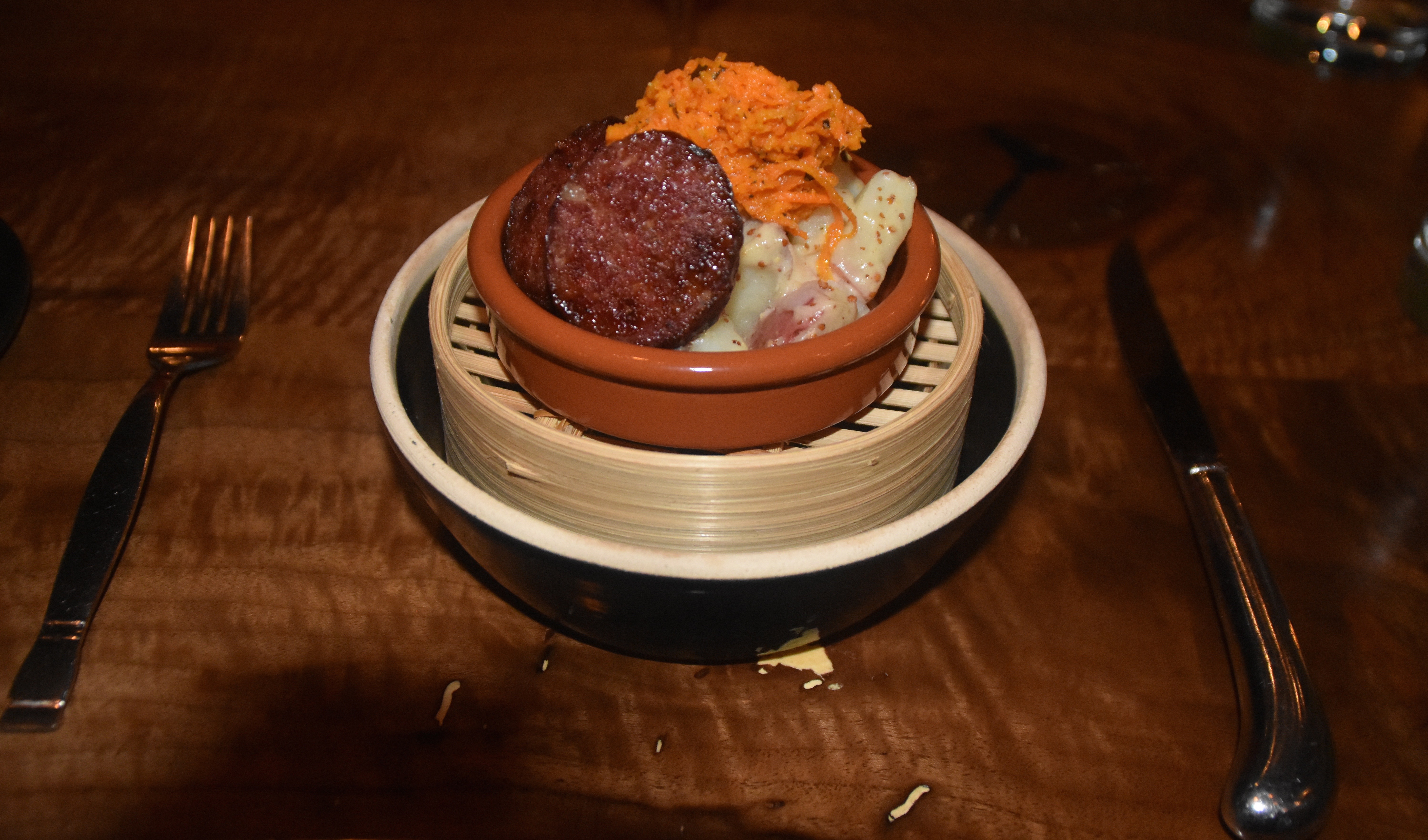
The main course was petrale sole with broccoli cream sauce. This was not a fish I was familiar with and Mark explained that it is the preferred Pacific flatfish by most chefs. After tasting it, I have to agree. I thought Dover sole was the best until I tasted this wondrously prepared entree.
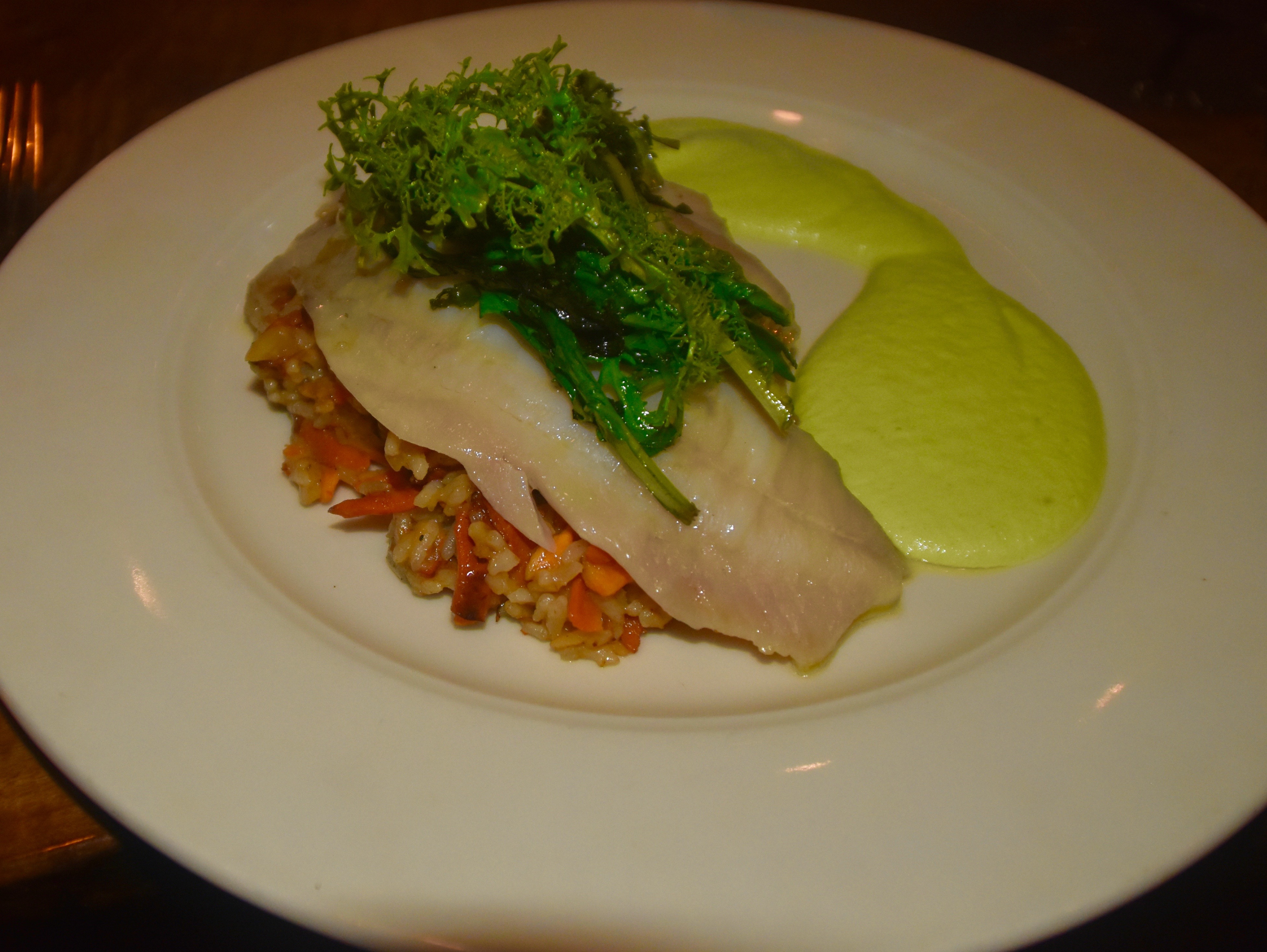
Dessert was a very simple and palate cleansing dish of homemade ice cream served with a glass of Oregon cider.
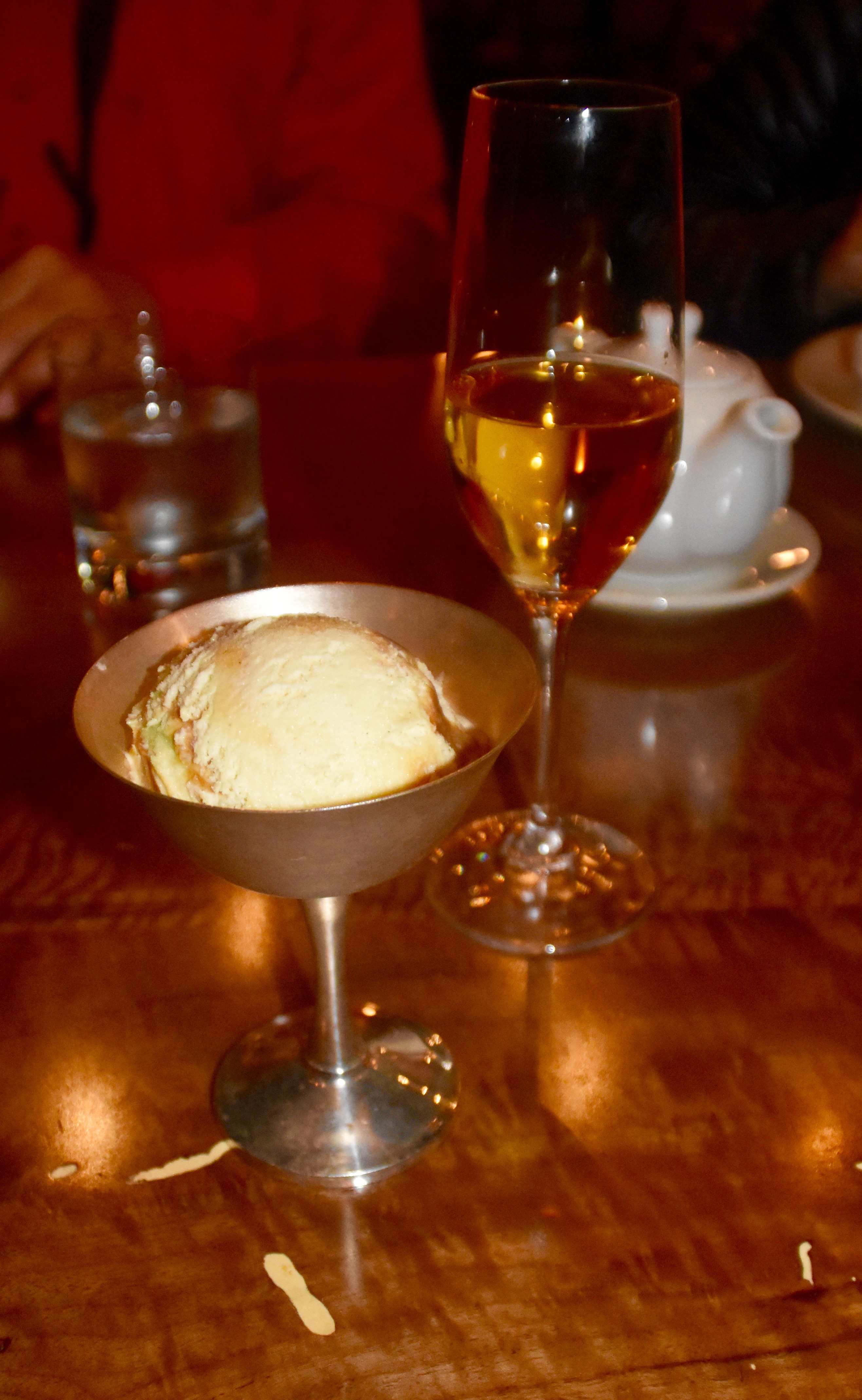
After polishing this off, Mark tempted me try a glass of Eau de Vie of Douglas Fir, also made in Oregon. At almost 50% alcohol and with a definite, but rather pleasant taste of conifer, I discovered that there’s a lot more to get high on in the state than just wine, beer and grass.
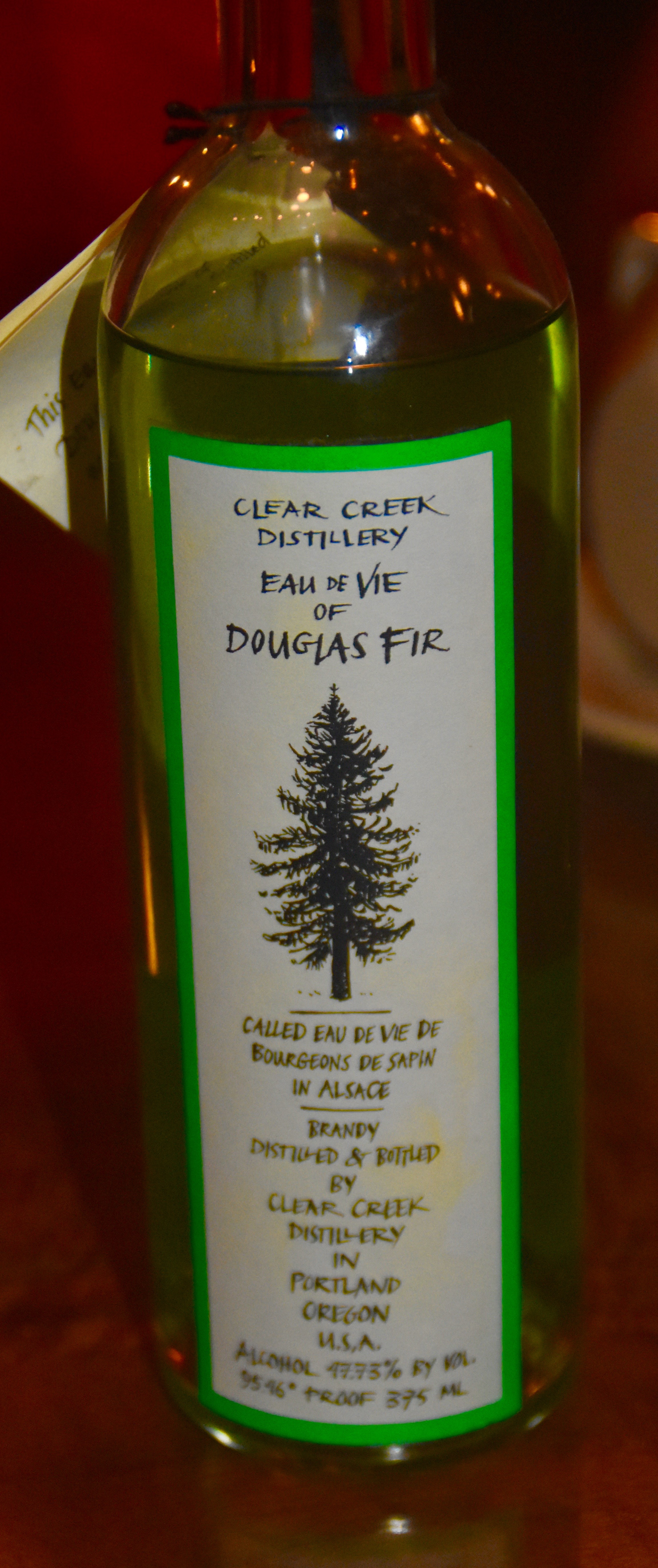
It was just after nine when we shook hands with Mark and his staff and ended what I would describe as a very fulfilling day in Albany Oregon. If you are in the Willamette Valley area I strongly suggest an Albany itinerary exactly as we were presented by the fine people of that city last October.
In the next post I’ll head to the covered bridges, waterfalls and wineries of Lane County, Oregon. I hope you’ll join me.

